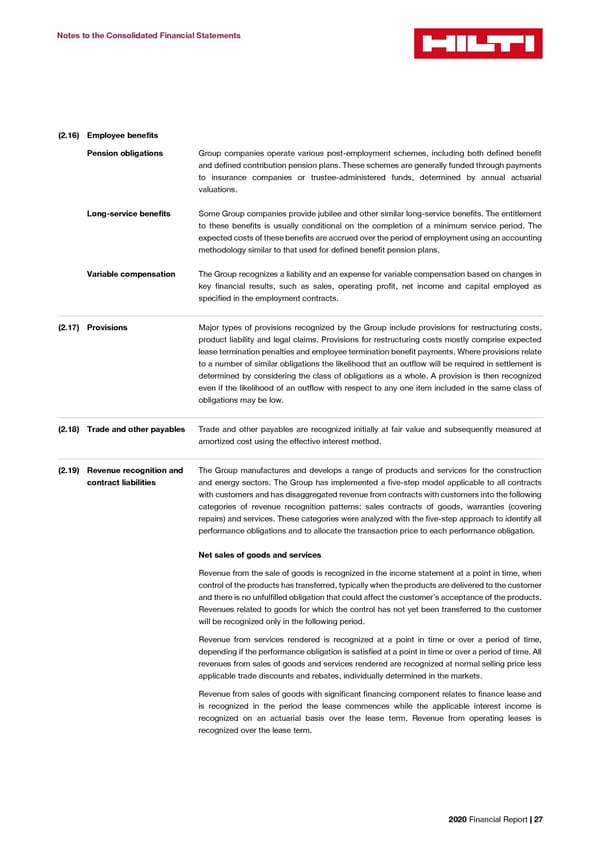Notes to the Consolidated Financial Statements (2.16) Employee benefits Pension obligations Group companies operate various post-employment schemes, including both defined benefit and defined contribution pension plans. These schemes are generally funded through payments to insurance companies or trustee-administered funds, determined by annual actuarial valuations. Long-service benefits Some Group companies provide jubilee and other similar long-service benefits. The entitlement to these benefits is usually conditional on the completion of a minimum service period. The expected costs of these benefits are accrued over the period of employment using an accounting methodology similar to that used for defined benefit pension plans. Variable compensation The Group recognizes a liability and an expense for variable compensation based on changes in key financial results, such as sales, operating profit, net income and capital employed as specified in the employment contracts. (2.17) Provisions Major types of provisions recognized by the Group include provisions for restructuring costs, product liability and legal claims. Provisions for restructuring costs mostly comprise expected lease termination penalties and employee termination benefit payments. Where provisions relate to a number of similar obligations the likelihood that an outflow will be required in settlement is determined by considering the class of obligations as a whole. A provision is then recognized even if the likelihood of an outflow with respect to any one item included in the same class of obligations may be low. (2.18) Trade and other payables Trade and other payables are recognized initially at fair value and subsequently measured at amortized cost using the effective interest method. (2.19) Revenue recognition and The Group manufactures and develops a range of products and services for the construction contract liabilities and energy sectors. The Group has implemented a five-step model applicable to all contracts with customers and has disaggregated revenue from contracts with customers into the following categories of revenue recognition patterns: sales contracts of goods, warranties (covering repairs) and services. These categories were analyzed with the five-step approach to identify all performance obligations and to allocate the transaction price to each performance obligation. Net sales of goods and services Revenue from the sale of goods is recognized in the income statement at a point in time, when control of the products has transferred, typically when the products are delivered to the customer and there is no unfulfilled obligation that could affect the customer’s acceptance of the products. Revenues related to goods for which the control has not yet been transferred to the customer will be recognized only in the following period. Revenue from services rendered is recognized at a point in time or over a period of time, depending if the performance obligation is satisfied at a point in time or over a period of time. All revenues from sales of goods and services rendered are recognized at normal selling price less applicable trade discounts and rebates, individually determined in the markets. Revenue from sales of goods with significant financing component relates to finance lease and is recognized in the period the lease commences while the applicable interest income is recognized on an actuarial basis over the lease term. Revenue from operating leases is recognized over the lease term. 2020 Financial Report | 27
 2020 Financial Report Page 28 Page 30
2020 Financial Report Page 28 Page 30